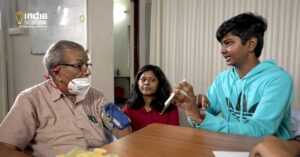Indian With World’s 1st Patent for ‘Digital Vaccines’ for Kids Explains How They Work
Biomedical tech entrepreneur Bhargav Sri Prakash explains all about ‘Digital Vaccines’, which could help reduce the risk of disease and hospitalisation in children.
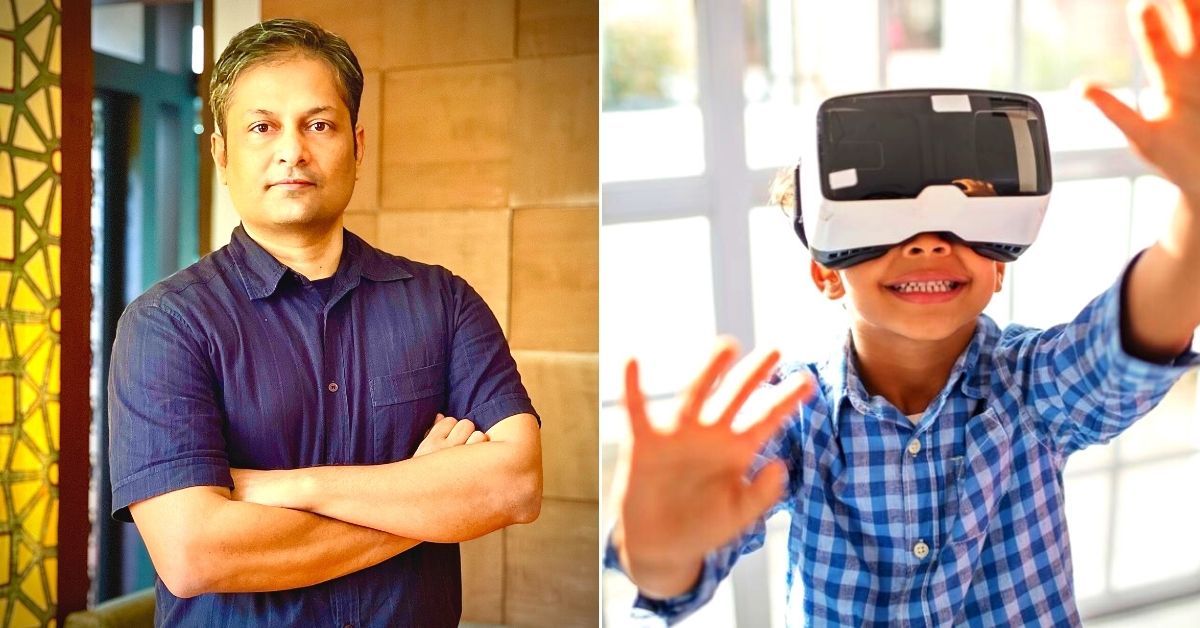
For the past 12 years, Bhargav Sri Prakash and his team at FriendsLearn — a bio and health tech startup with offices in Chennai and San Francisco — have envisioned ways to use frontier technologies for a unique cause.
Machine learning-deep learning, neurocognitive computing (AI), neural networks, gamification, AR/VR (metaverse) and mobile app technology — Bhargav’s venture has harnessed these to non-invasively induce a neural response, physiological outcome, and an immune response that is building evidence to prove how to lower the risk of disease, reduce symptoms, and decrease hospitalisation for young children.
“Called Digital Vaccines, they’ve been shown to work by stimulating the brain-gut-immune system at the cellular biomarker level to lower the risk of a wide range of diseases; non-communicable ones like diabetes, cardiovascular disease, hypertension, and cancer; cognitive diseases such as ADHD, dementia; and, recently, infectious diseases like COVID-19,” says Bhargav, CEO and founder of FriendsLearn, in a conversation with The Better India.
These Digital Vaccines fall under an emerging science called digital therapeutics, which seeks to deliver medical care through smartphones, tablets, and similar devices by effecting behavioural change at scale using evidence-backed software solutions. (Above images courtesy Bhargav Sri Prakash and Parent Map)
“A child experiences everything like virtual reality gamified content. That gamified content is delivered via a mobile app called Fooya! This app will have a school grade appropriate collection of content, which is a compilation of neurocognitive training mechanisms,” he says.
In layperson terms, it’s a way by which we are able to message or pulse the brain with stuff that they see. “We don’t do this in an invasive way, but use sensory pathways like sight, touch, and hearing. Those are primary signal pathways and we are able to create certain patterns of neural response in the brain through this gamified content,” explains Bhargav.
Professor Rahul Ladhania, a faculty member at the University of Michigan School of Public Health, says, “A key principle behind the concept of digital vaccines is of neuro-stimulation leading to transference — while the gamified content neuro-cognitively trains children to make healthier choices in the virtual world, do the children then go on to the real world and start making healthier choices?”
He adds, “Illustrating this with a simple example, say, a child’s digital form enters the game. Through that virtual experience, the child’s brain is directed — through virtual rewards and penalties — to avoid aerated soft drinks that could result in lifestyle diseases like obesity. These games aim to perform neuro-cognitive training on the child’s brain, and the hypothesis is that this leads them to avoid soft drinks in real life. Additionally, this concept also has scope for AI-driven personalisation of these rewards and penalties. Children are not alike, and their brains might respond differentially to these incentives”
Those healthier choices affect their gut and the microbes that live inside them over a period of time. They also impact their blood parameters. So their blood sugar and cholesterol numbers, among other biomarkers, start changing over a period of time.
One thing that modern science is waking up to is that our brain and intestines are actually connected. The intestines are home to trillions of bacteria and viruses. The health of that ecosystem is actually the bedrock of our immune system and also affects our mind, mood, thoughts, etc.
Receiving a patent
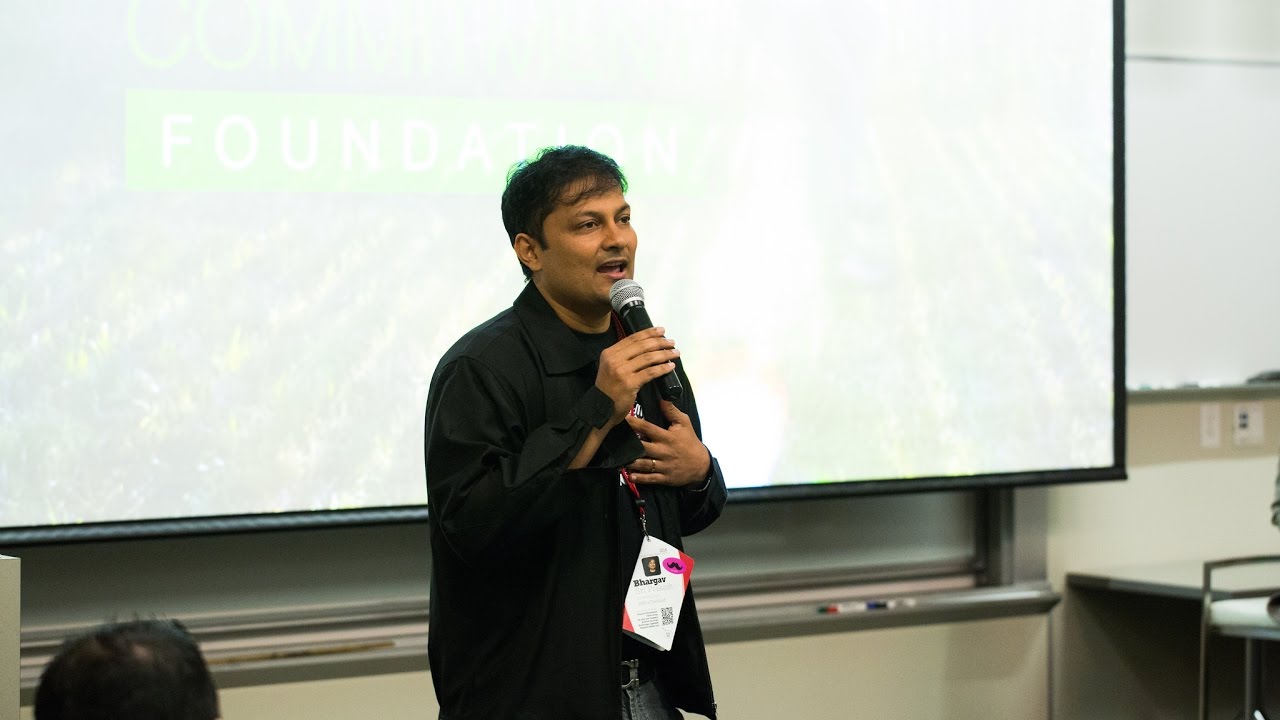
FriendsLearn was founded in the US in 2013. The foundational research began during Bhargav’s fellowship with the Kauffman Foundation in 2011. FriendsLearn is currently working with schools around the world that can apply to become partners of the Digital Vaccine Project at Carnegie Mellon University. As a result of a highly selective and rigorous process of qualification, they’re working with a dozen schools around the world, and one in India.
“More than half a million children around the world have been safely digitally vaccinated through our platform, and we aim to grow that number to hundreds of millions in the coming years. FriendsLearn has been self-funded thus far, along with grants from the Kauffman Foundation, Remala Foundation, Richard King Mellon Foundation, etc. We are now growing profitably based on the commercialisation of our platform,” claims Bhargav.
The scientific and biomedical team at FriendsLearn is led by Professor Rema Padman at Carnegie Mellon University’s (CMU) Digital Vaccine Project. She is a Trustees Professor of Management Science and Healthcare Informatics at the Heinz College of Information Systems and Public Policy at CMU, and an expert in AI and medicine. They work in close collaboration with other eminent researchers, scientists, and clinicians at the Bloomberg School of Public Health at Johns Hopkins University, University of Michigan School of Public Health, Baylor College of Medicine, Kansas Medical Center, University of Oxford, Stanford University School of Medicine, and VHS Hospital in Chennai, among others. The programme was instituted in 2019.
Last month, Bhargav was awarded a patent by the US Patent and Trademark Office for the ‘systems and methods for digital vaccine’, which he developed as part of Carnegie Mellon University’s Digital Vaccine Project. This is also the world’s first patent for a Digital Vaccine.
The patent has helped FriendsLearn secure broad intellectual property (IP) coverage for their ability to non-invasively induce biological outcomes at the cellular and biomarker level, through the use of metaverse AR (augmented reality)/VR (virtual reality) and AI.
“The patent covers aspects of our methods to stimulate the brain and gut non-invasively, which are at the core of our ability to unlock the self-healing mechanisms of the brain-gut axes and the immune system. While the US was the first country to grant us approval for the legal protection of this innovation and intellectual property, the application is also pending in India, Europe, China, Canada, Australia, New Zealand, and other countries,” explains Bhargav.
Man behind the metaverse experience
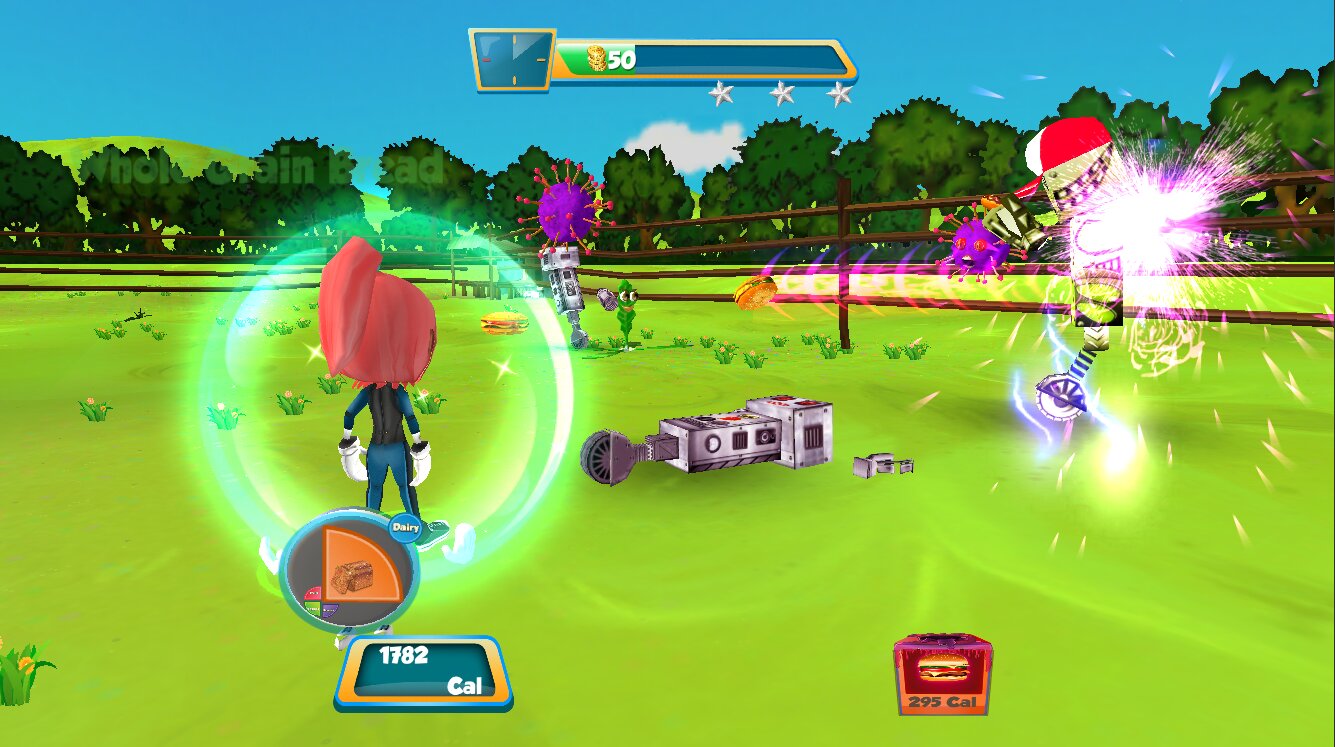
Bhargav, a 45-year-old biomedical tech entrepreneur, grew up in Chennai in a middle-class family. His mother, Sheila Sri Prakash, is widely regarded as a pioneering architect and sustainability expert. His late father, M V Sri Prakash, was an entrepreneur and ran a business manufacturing patented innovative products in the sanitation infrastructure space.
“I began my career as a professional tennis player. I went to College of Engineering, Guindy for my undergraduate degree in Mechanical Engineering, and went for graduate studies in Automotive Engineering because I had a passion for racing cars. I went on a research fellowship to the University of Michigan in Ann Arbor,” he recalls.
His research in powertrain simulations from graduate school was incubated through the Business School at the University of Michigan in 1999-2000. The company, CADcorporation, was sold in 2005, after which he founded Vmerse in the VR space to cater to American universities. After selling Vmerse in 2009, he spent some time working in the fields of finance and investments before his eyes turned toward digital therapeutics.
“I became focused on the health of children after becoming a parent, seeing my daughter being influenced by advertisements from processed food companies and how that weakened her health. I also became disillusioned that modern medicine has a much greater focus on profiting from our sickness, rather than prevention,” he says.
The project began when he was a fellow of the Kauffman Foundation in 2010-2011. There, he was introduced to Dr Amanda Bruce at Kansas Medical Center, who was doing pioneering work on the study of neural responses in children. Based on those fundamental discoveries, “they developed gamified VR technology for non-invasive neuromodulation in children”.
The first human randomised controlled trials were undertaken by Dr Jennette Moreno and Dr Craig Johnston at the Baylor College of Medicine’s Child Nutrition Research Center in 2013.
What roles can digital vaccines play in the process of child development?
Digital Vaccines are based on Neuroplasticity (the brain’s ability to change and adapt as a result of experience) during the habit formation stages of brain and gut biome development. They have been developed to protect a child’s health by reducing their lifelong risk of disease. This, in turn, is done by empowering their foundational immune system during the habit formation stage through methods of stimulating neurocognitive responsiveness, gut microbiome and immune system. The core technology is being delivered as part of a curricular K-12 (kindergarten to 12th grade in the American school system) health programme through select schools.
“Our partner schools are recognised as a DVx SCHOOL. The rigorously designed randomised field trials aim to establish scientific evidence that children who are digitally vaccinated will have the knowledge and behavioural changes to benefit from lifelong risk reduction for diabetes, cardiovascular disease, hypertension, and cancer, as well as infectious diseases like COVID-19 and the flu. In the future, we hope to induce healthier cognitive development and tackle mental health,” claims Prof Rema Padman.
“A crucial step in the science of vaccine development and validation involves a requirement to quantify the long term safety, as well as health impact, upon a large number of healthy individuals. This is determined through large scale human health (phase 3) trials. Furthermore, it is also required to track and quantify adverse events after the vaccine is given to millions of people. This is broadly how vaccines and the underlying science have been refined to eradicate devastating disease and protect societies from the risk of infection. We use the same scientific process to ethically develop and quantify the safety and efficacy of Digital Vaccines,” she adds.
Behaviour modification, data and preventing misuse
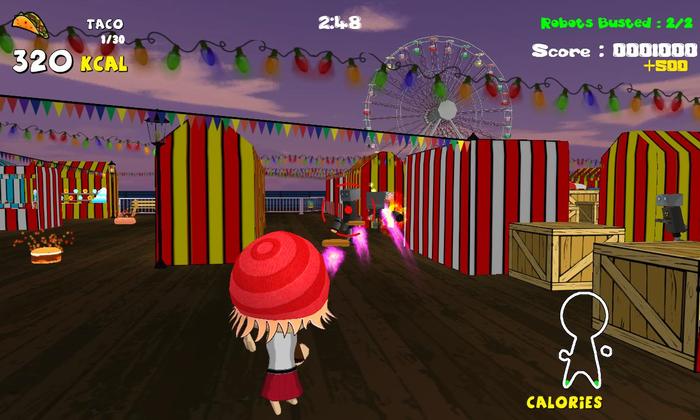
The potential for any powerful technology to be misused is a very important question and one that we must think about from a scientific and ethical innovation perspective. This is especially important because they cater to children — a vulnerable population from a bioethics perspective.
“From a biomedical research perspective, we have to be absolutely sure that we know the long term benefits and risks for children,” Bhargav says. “As such, we have innovated several design features and guard rails within our Digital Vaccine platform to ensure protocol driven safety, such as dose limits on the duration of exposure. The underlying subscription-only business model ensures a complete focus on the health of the child and the family, by eliminating any conflict of interest if our revenue was based on advertising or screen time. Also, data use and privacy are absolutely sacrosanct in the development and continued monitoring of health.”
If not harnessed with a robust framework to ensure safety of the subject, these neuro-modulation technologies can cause serious harm to the brain. Employed in a medical setting, it’s important to gauge the right amount and frequency of exposure. For example, you could die from overdosing on crocin. But with the right dosage, paracetamol can help you with a fever. The right dose could be 250mg, taken three times a day and right after your meals. Those determinations are based on clinical trials and data.
“Through these processes, we are able to determine that a screen time of 30 to 45 minutes in a week for the child is shown to reduce the risk of diabetes by ‘so and so amount’. This is how these protocols are created and dose responses are recommended. A limitation of regular medicine is often the assumption that one size fits all. With technology, we can personalise this process further so that it’s specific to an individual depending on their location, height and weight, whether they’re overweight, have allergies, etc. With digital vaccines, all of that is taken into consideration so it’s very precisely mapped to that one person,” he explains.
Ethical questions
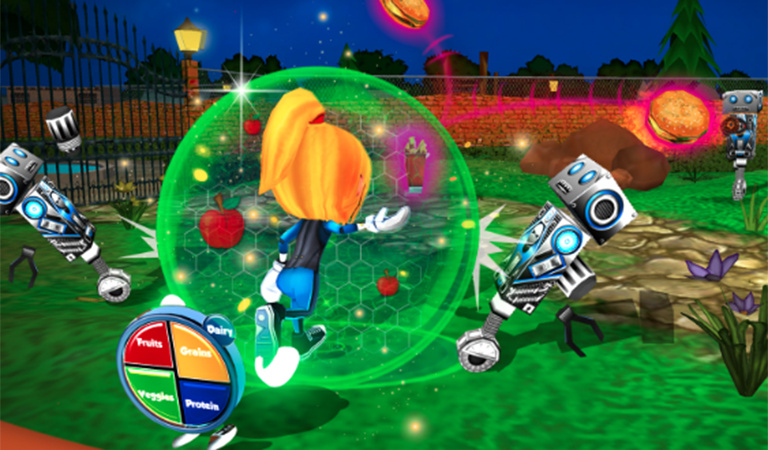
To your average sceptic, digital vaccines seem like a form of mind control for children. But do children really have control over their choices? Or are these choices often manipulated through advertising and marketing?
As a society, we are becoming more and more sick. This sickness is coming from an increased presence of processed food in our daily diets. And this isn’t happening by accident. How many billions of dollars go into advertising all this processed food? In fact, there is a direct link between the increase in unhealthy diets and an explosion in all sorts of illnesses and disorders — from diabetes to cancer, COVID-19, mental health illnesses, and more.
According to a 2021 paper published in BMJ Global Health, “There is an urgent need for effective action to address the over 10 million annual deaths attributable to unhealthy diets [globally].”
It adds, “Unhealthy diets are a major risk factor for non-communicable diseases (NCDs) such as heart disease, type-2 diabetes, and cancer. Barriers to progress include opposition of powerful commercial actors, notably the multinational ultra-processed food and beverage industry, which we define as corporations involved in the manufacture or sale of ultra-processed foods and sugar-sweetened beverages.”
Going further, the WHO said that approximately 2 billion adults are overweight, of whom 650 million are considered to be affected by obesity.
There are flavour enhancers, preservatives and colours in processed food. The body’s machinery is breaking down because of the extent of unnatural things we are allowing to enter the system through processed food. And all this starts with the mind of children.
“The US invented these ways of doing it, and now where do you think their growth markets are? I left India in the late 1990s. That was the time when Coca-Cola and Pepsi were coming into the country. They had taglines like ‘Yehi Hai Right Choice, Baby’, following which you had other big celebrities endorsing soft drinks,” says Bhargav.
Looking at these advertisements, most Indians think these are the ‘choices’ of the new generation. But what happens to diabetes 20 years down the road? India is deemed as the world’s capital of diabetes — the country’s diabetic population is close to hitting 80 million by 2030.
“So, the role we are playing is trying to really be an advertising engine for foods that are healthy. We don’t sell any product but are just advertising items in the best interest of the child’s health. We use science, understand what’s healthy for children based on hard evidence, and try to get them more favourably inclined towards it. That was the original thesis, but the ethics of this was really dissected when we started running medical-grade clinical trials,” says Prof Padman.
Sitting in front of institutional ethics committees, Bhargav recalls being asked questions ranging from the medical risks of increasing blood flow to the brain, ethical concerns over free will, and ‘brainwashing’ to justifying the sedentary behaviour induced by time spent watching a screen.
“All these ethical considerations are vetted by ethics and scientific review committees. We’ve done multiple randomised control trials, published our findings in top journals, and shown that through this non-invasive intervention, we can reduce the risk of cancer, diabetes or COVID-19. There’s a clear established evidence base to say that benefits far outweigh risks,” he claims.
Fundamental to any endeavour regarding Digital Vaccines is ensuring data privacy. From a bioethics and biomedical perspective, children are considered a vulnerable population. They cannot make fully informed decisions. “From a bioethics perspective, everything is designed with the privacy of the child in mind. There are very stringent rules about what data we can collect, what is completely anonymised and how these neural networks work,” he adds.
There is data in the real world that FriendsLearn collects as children use the Fooya! app. But there is also data they collect from these randomised controlled trials run by scientists at Carnegie Mellon, Johns Hopkins University, Stanford University, etc. Those are all protocol-driven and IRB (institutional review board)-approved. IRBs are scientific and ethics review boards determining what data you collect, how long you can store it, what servers are they held in, what analysis is conducted using the data and what information is published more broadly.
“After a given point in time, that data will be completely destroyed. This is also where science and the protocols require us to never be able to single out any one individual. So, no one is personally identifiable. This technology has been developed in the Western market, where we have to abide by very stringent regulations like General Data Protection Regulation (GDPR-a EU law), Children’s Online Privacy Protection Rule (COPPA-a US law) and Health Insurance Portability and Accountability Act (HIPAA – a US law),” explains Prof Padman.
Despite the intent of ventures like FriendsLearn to adopt strict data privacy measures, there are real concerns about the misuse of this technology in less mature democracies or autocracies. India, for example, doesn’t yet have a modern data protection law regime.
There are already attempts at commercialising Digital Vaccines. But won’t the process of commercialisation create conflicts that will have serious implications down the line? After all, this is very precious and valuable data for major corporations.
“We’re completely self-funded and not backed by any investors. We don’t generate Re 1 of income from advertising. That eliminates a massive conflict because only advertising-supported services push the boundaries in terms of being able to sell and monetise that data,” Bhargav says.
He adds, “Our revenue model is implemented in schools. The parents pay through the school. It’s a subscription-based service. Our entire value proposition is focused on the health of the child. This removes options of trying anything with the data that isn’t in the interest of the child’s health,” claims Bhargav.
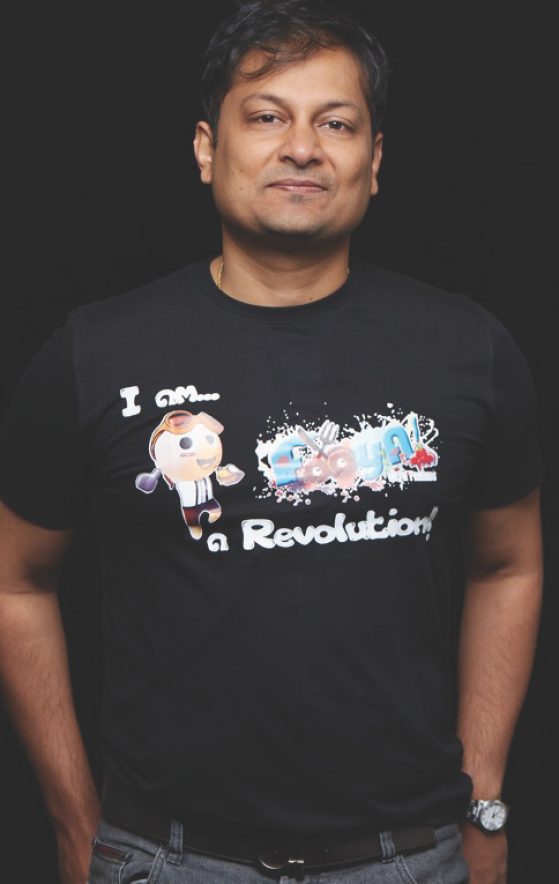
Looking Ahead
“In partnership with progressive governments, as well as aligned funders and investors, we aim to undertake state-wide and/or national Digital Vaccination evidence based programmes. This is to lower the incidence of a wide spectrum of diseases as the key step towards building more resilient societies, while lowering the cost of healthcare,” he says.
(You can click here to learn more about Fooya! and FriendsLearn. Also click here or here to download the app.)
Additional Sources:
‘Can AI-powered’ Digital Vaccines’ open the door for innovation?’ by Anjali Raja K; Published on 10 May 2022 courtesy INDIAai
Lauber K, Rutter H, Gilmore AB; ‘Big food and the World Health Organization: a qualitative study of industry attempts to influence global-level non-communicable disease policy’; BMJ Global Health 2021;6:e005216.
‘Prevalence of Obesity’ courtesy World Obesity
‘Global health leaders to address drivers of unhealthy food systems’; Published on 10 December 2021 courtesy University of Sydney
Kato-Lin, Yi-Chin & Kumar, Uttara & Prakash, Bhargav & Prakash, Bhairavi & Varadan, Vasini & Agnihotri, Sanjeeta & Subramanyam, Nrutya & Krishnatray, Pradeep & Padman, Rema. (2020); Impact of Pediatric Mobile Game Play on Healthy Eating Behavior: Randomized Controlled Trial. JMIR mHealth and uHealth. 8. e15717. 10.2196/15717.
(Edited by Divya Sethu)
Like this story? Or have something to share? Write to us: [email protected], or connect with us on Facebook and Twitter.
If you found our stories insightful, informative, or even just enjoyable, we invite you to consider making a voluntary payment to support the work we do at The Better India. Your contribution helps us continue producing quality content that educates, inspires, and drives positive change.
Choose one of the payment options below for your contribution-
By paying for the stories you value, you directly contribute to sustaining our efforts focused on making a difference in the world. Together, let's ensure that impactful stories continue to be told and shared, enriching lives and communities alike.
Thank you for your support. Here are some frequently asked questions you might find helpful to know why you are contributing?


This story made me
-
97
-
121
-
89
-
167






